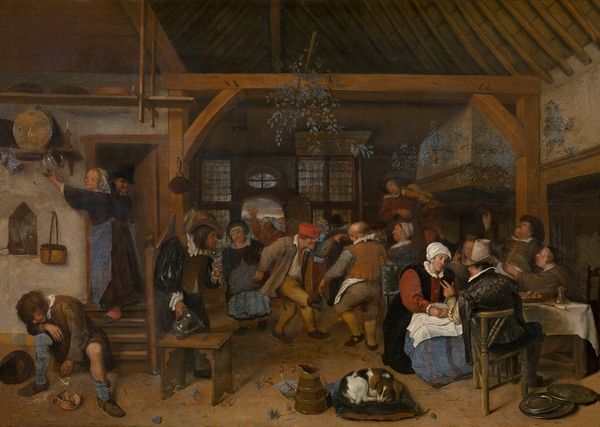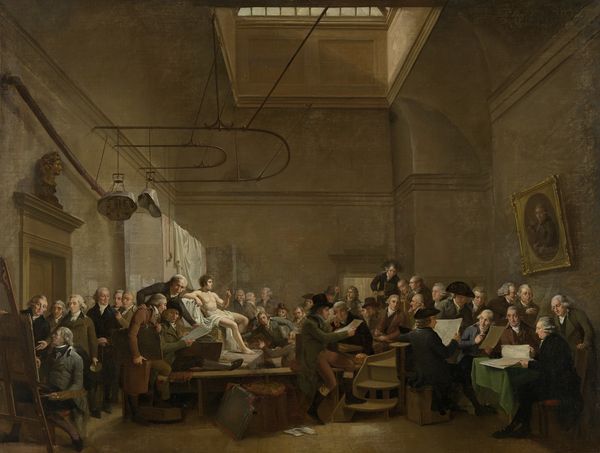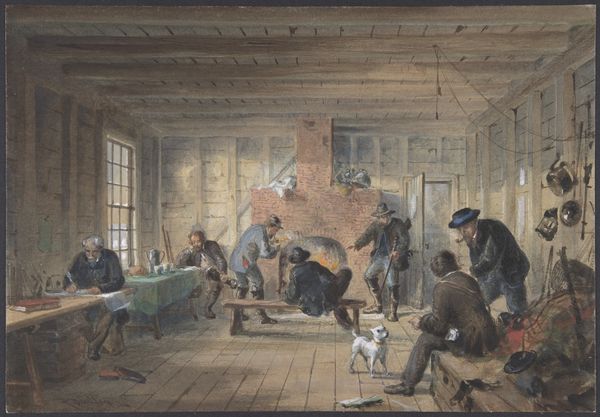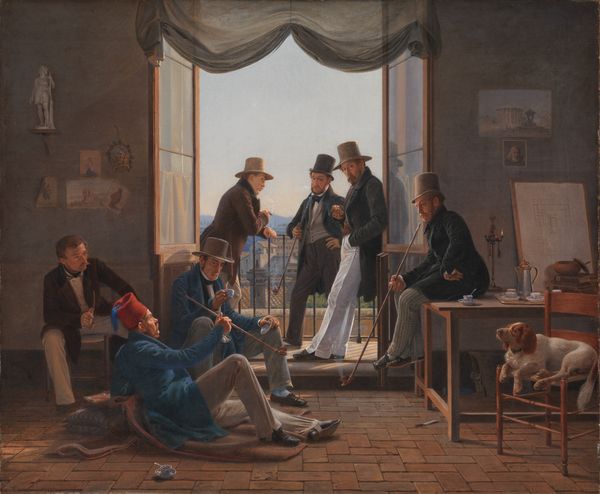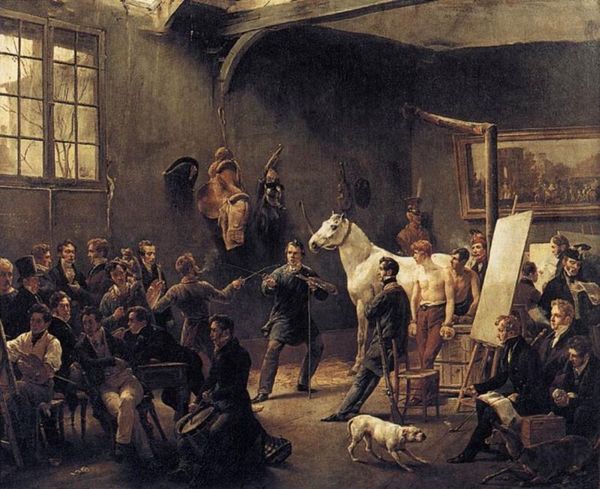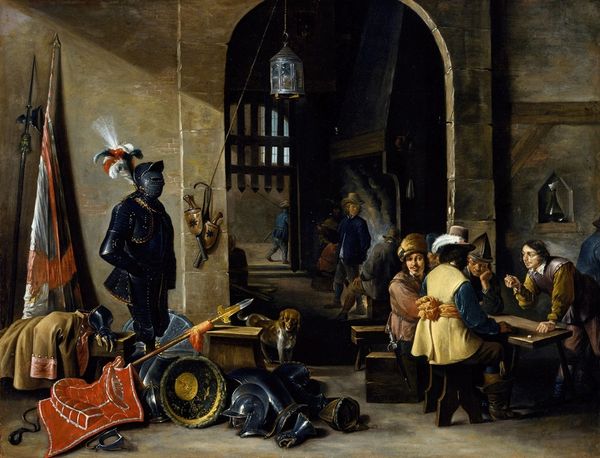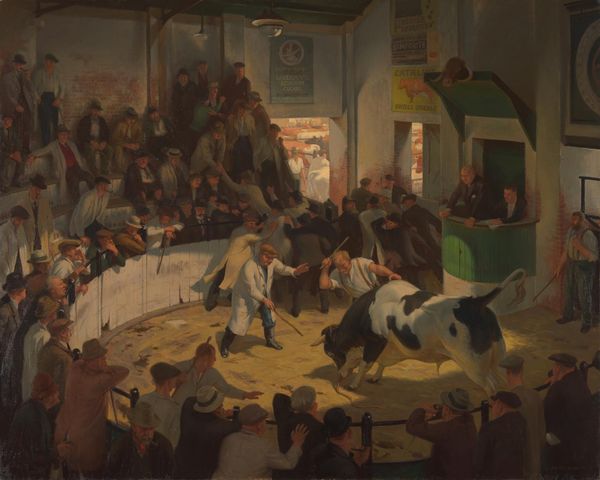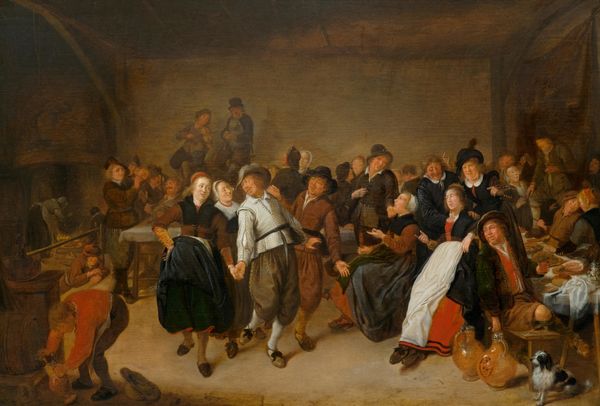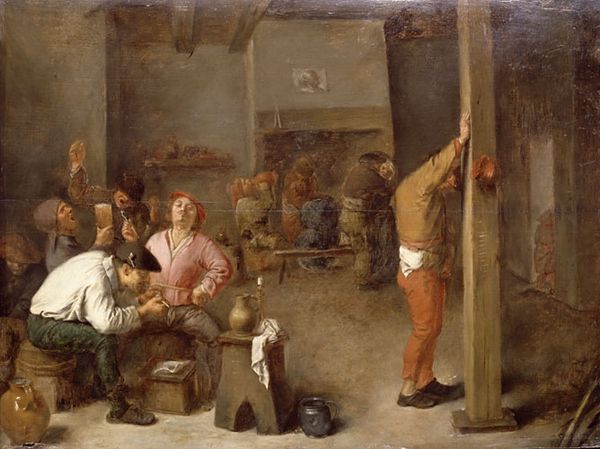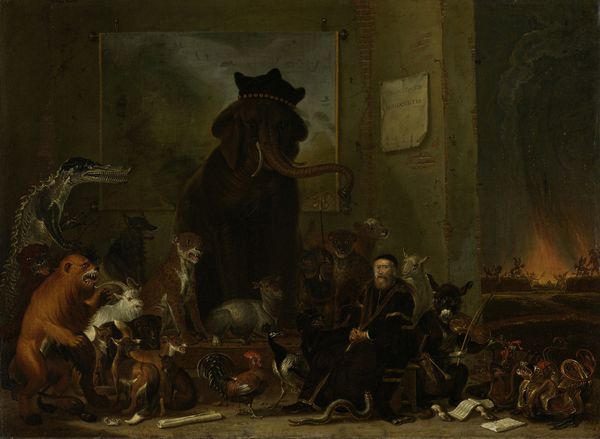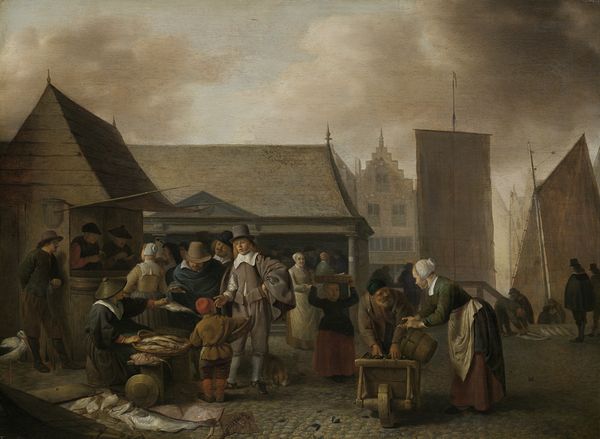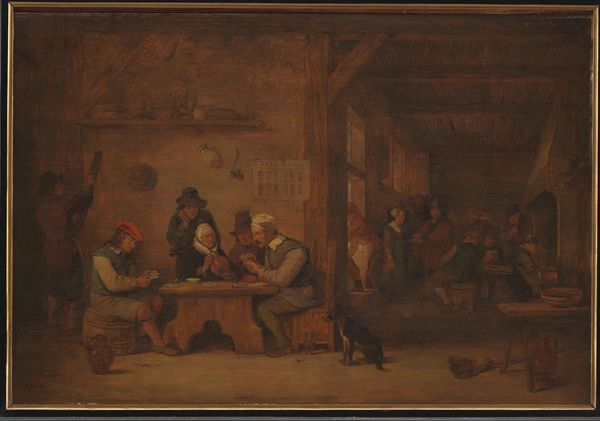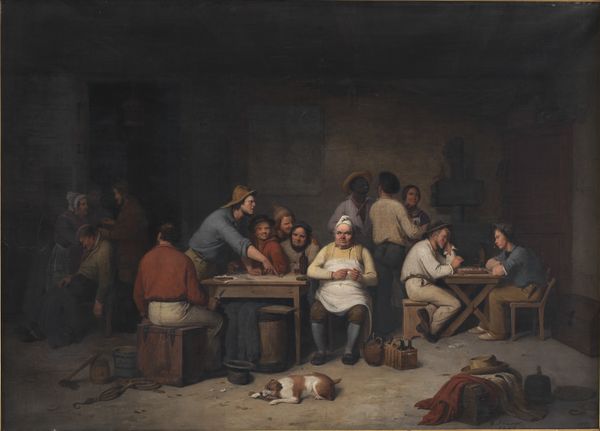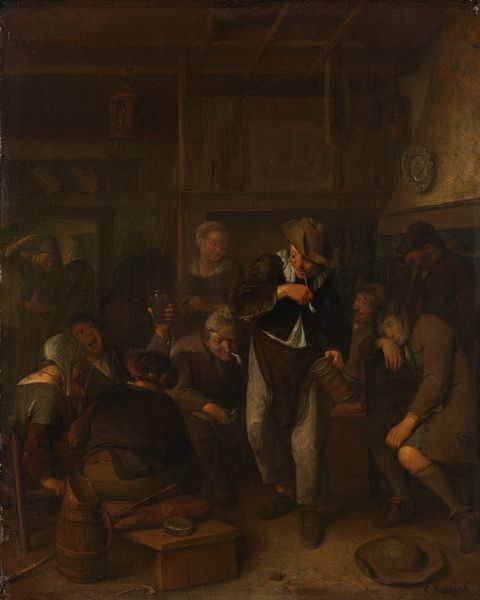
Dimensions: support: 1028 x 1286 mm
Copyright: CC-BY-NC-ND 4.0 DEED, Photo: Tate
Editor: This is Thomas Weaver's "Thomas Morris’s Sheep Show at Barton-on-Humber, Lincolnshire." It depicts a gathering of men evaluating livestock. What symbolic weight would you say this seemingly simple scene carries? Curator: The sheep become symbols of prosperity, pride, and England itself. Notice how the men in dark clothing surround the animals, underscoring their importance. The scene also mirrors the pastoral tradition, reflecting a longing for a simpler, idealized life rooted in the land. Editor: So the sheep represent more than just livestock; they embody cultural values. Curator: Precisely! It evokes a powerful sense of place and identity for the viewer, reflecting cultural memory and continuity. Editor: I hadn't considered how much symbolism could be packed into a sheep show! Curator: Indeed, everyday imagery often carries unexpected emotional and cultural significance.
Comments
tate 6 months ago
⋮
http://www.tate.org.uk/art/artworks/weaver-thomas-morriss-sheep-show-at-barton-on-humber-lincolnshire-t03438
Join the conversation
Join millions of artists and users on Artera today and experience the ultimate creative platform.
tate 6 months ago
⋮
Robert Bakewell of Dishley near Loughborough was a pioneer in improving breeds of sheep and cattle to supply a steadily increasing demand for meat. As a result of his efforts England was said to have had '2 lbs. of mutton where there was only 1 lb. before'. Painted fifteen years after his death, Weaver's picture shows breeders at Dishley during the bidding for a season's use of rams from Bakewell's breed, which commanded high fees. Gallery label, December 1989
